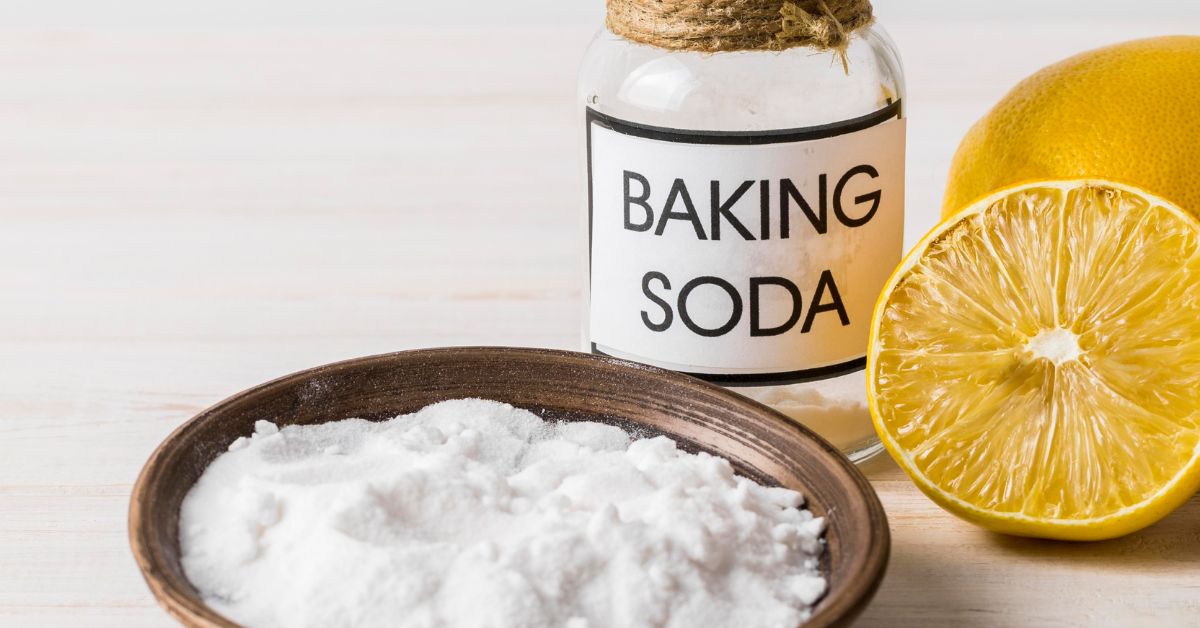GENERAL
Quid Pro Quo Harassment: What It Is and Why It Matters

Quid Pro Quo Harassment: What It Is and Why It Matters
Sexual harassment in the workplace is a critical issue that impacts countless individuals worldwide. One specific form of sexual harassment is quid pro quo harassment, a term that has gained increased attention in recent years, especially with the growing conversation about workplace rights and gender equality. Understanding what quid pro quo harassment is, its legal implications, and its potential impact on individuals and organizations is crucial for fostering a safe and respectful working environment.
In this article, we will provide a comprehensive overview of quid pro quo harassment, explain how it occurs, the laws surrounding it, and why it’s so important for both employees and employers to understand and address it effectively.
What Is Quid Pro Quo Harassment?
“Quid pro quo” is a Latin term that translates to “something for something.” In the context of sexual harassment, it refers to a situation where a person in a position of authority demands sexual favors in exchange for workplace benefits or career advancement. This form of harassment occurs when an individual offers, demands, or implies job-related benefits in exchange for sexual favors, creating an unequal power dynamic.
For example, an employer might suggest that an employee must engage in sexual acts or provide sexual favors to receive a promotion, raise, or continued employment. The essence of quid pro quo harassment’s lies in the manipulation of power and coercion within the workplace.
Types of Quid Pro Quo Harassment
Quid pro quo harassment can manifest in several ways, including:
- Direct Requests: A supervisor or employer directly asks for sexual favors in exchange for a benefit, such as a raise, promotion, or job security.
- Subtle Implications: Rather than making direct requests, a manager or colleague may imply that failure to comply with sexual advances will result in negative consequences such as demotion or job loss.
- Conditional Favoritism: An employee may be offered job-related advantages (like a desirable assignment) in exchange for sexual behavior or compliance.
Regardless of how the harassment is communicated, it creates an abusive environment that undermines an employee’s sense of safety, respect, and dignity.
How Quid Pro Quo Harassment Occurs
Quid pro quo harassment’s is typically perpetrated by individuals in positions of power, such as supervisors, managers, or executives, who have authority over an employee’s career trajectory. This power dynamic is central to why quid pro quo harassment is so harmful—because the employee may feel compelled to comply with the demand in order to protect their job or career. The coercive nature of quid pro quo harassment makes it particularly damaging to the well-being of the employee.
Common Scenarios of Quid Pro Quo Harassment
- Promotion or Job Security: A supervisor suggests that an employee will be considered for a promotion, raise, or continued employment if the employee agrees to sexual advances or favors.
- Hiring Practices: A hiring manager may imply that a job applicant will be hired or have their job offer expedited if they comply with sexual requests.
- Performance Reviews: A manager might hint that an employee’s performance evaluation will improve if they engage in sexual activity or behave in a sexually suggestive manner.
In these situations, the employee faces a difficult dilemma. If they refuse the advances, they risk losing their job, missing career opportunities, or facing retaliation. On the other hand, if they comply, they may suffer emotional, psychological, and professional consequences that can affect their health and future career prospects.
Legal Implications of Quid Pro Quo Harassment
In many countries, including the United States, quid pro quo harassment’s is illegal and falls under sexual harassment laws that protect employees from discrimination and abuse. For example, in the United States, Title VII of the Civil Rights Act of 1964 prohibits workplace discrimination based on sex, which includes sexual harassment. Under Title VII, employers are legally required to maintain a harassment-free work environment and take immediate action to prevent and address harassment incidents.
Legal Definition and Scope
According to U.S. Equal Employment Opportunity Commission (EEOC) guidelines, quid pro quo harassment occurs when a person in a position of authority (such as a supervisor or manager) demands or requests sexual favors from an employee and, in exchange, offers or threatens employment benefits such as:
- Hiring
- Firing
- Promotions
- Salary increases
- Job assignments or responsibilities
It’s important to note that for quid pro quo harassment’s to be legally actionable, the harassment must involve an explicit or implicit exchange of job-related benefits for sexual favors.
Employer Responsibilities
Employers are legally required to prevent and promptly address instances of quid pro quo harassment. Failure to do so can lead to legal consequences, including lawsuits, damages, and reputational harm to the organization. Employers must:
- Implement effective anti-harassment policies and training programs.
- Provide clear mechanisms for employees to report harassment.
- Investigate complaints thoroughly and take corrective actions when necessary.
- Ensure that employees who report harassment are protected from retaliation.
Employers should also provide resources for support, such as counseling, legal advice, and a safe environment for employees to voice their concerns without fear of retaliation.
Why Quid Pro Quo Harassment Matters
Understanding the significance of quid pro quo harassment’s is crucial for both employers and employees, as it affects individuals on a personal, professional, and legal level. Here’s why it’s important to address quid pro quo harassment in the workplace:
1. Protecting Employee Well-being
Quid pro quo harassment’s has serious emotional and psychological impacts on victims. Employees subjected to this kind of harassment may experience stress, anxiety, depression, and a sense of powerlessness. These effects can undermine the victim’s self-esteem, mental health, and overall job satisfaction.
Employees who experience quid pro quo harassment often feel trapped in an uncomfortable and dangerous position, where they must weigh their career advancement against their personal values. Such emotional and psychological turmoil can negatively impact an employee’s ability to perform their job and lead a fulfilling life.
2. Maintaining a Respectful and Safe Workplace
A workplace that tolerates quid pro quo harassment’s fosters a toxic environment where abuse of power becomes normalized. This behavior not only damages the victims but also creates an atmosphere of fear and discomfort among other employees. When workers witness or learn about such behavior, it can erode morale, cause mistrust among colleagues, and damage teamwork.
A respectful workplace, on the other hand, encourages employees to thrive in an environment where everyone feels valued, respected, and safe from harassment. Employers must actively promote this kind of culture to protect the well-being of all employees.
3. Ensuring Legal Compliance
Quid pro quo harassment’s is not only unethical but also illegal under various employment laws. Organizations that fail to address and prevent such harassment risk legal consequences that can result in lawsuits, fines, and damage to their public reputation. Protecting employees from quid pro quo harassment is therefore essential for ensuring legal compliance and avoiding costly legal battles.
4. Preserving Company Reputation
Companies that fail to address harassment claims often face negative publicity, loss of business opportunities, and a damaged reputation. Customers, clients, and job candidates may be hesitant to associate with an organization that is known for tolerating harassment. By proactively preventing and addressing harassment, organizations can maintain their reputation as a responsible and ethical employer.
How to Prevent Quid Pro Quo Harassment
Preventing quid pro quo harassment’s requires a multi-faceted approach, involving both employer responsibility and employee awareness. Here are several strategies for preventing this type of harassment:
1. Implement Clear Policies and Training
Employers should have a clear anti-harassment policy that defines what constitutes quid pro quo harassment’s and outlines the procedures for reporting and addressing complaints. Training programs should be implemented regularly to ensure that employees and management understand their rights and responsibilities.
2. Create a Safe Reporting Environment
Employees need to feel comfortable reporting harassment without fear of retaliation. Organizations should provide multiple reporting avenues and guarantee confidentiality to encourage victims to come forward.
3. Act Promptly and Thoroughly
Once a complaint is made, employers must investigate it thoroughly and take appropriate corrective actions. Whether the allegations are substantiated or not, addressing the issue promptly is critical for maintaining trust and ensuring a safe workplace.
4. Enforce Anti-retaliation Policies
Retaliation against employees who report harassment must be strictly prohibited. Employees should feel confident that their decision to report an issue will not result in negative consequences such as demotion, firing, or exclusion from opportunities.
Conclusion
Quid pro quo harassment’s is a serious issue that affects not only the victims but also the integrity of the workplace as a whole. It is crucial for both employees and employers to recognize the risks of such harassment and take proactive steps to prevent and address it. By fostering a culture of respect, providing clear reporting mechanisms, and adhering to legal obligations, employers can protect their workers and create an environment where all employees can thrive without fear of exploitation or coercion.
For employees, it’s important to know your rights and to report any form of harassment to protect your dignity, career, and well-being. By understanding what quid pro quo harassment’s is, why it matters, and how it can be prevented, we can all contribute to creating safer and more respectful workplaces.
GENERAL
For Your Happy Tears
GENERAL
Capture Every Moment: Top Picks for the Best Vlogging Camera

capture-every-moment best vlogging camera is essential for capturing high-quality videos that engage audiences. Whether you’re a beginner starting your YouTube channel or a seasoned creator seeking to upgrade your gear, the right camera can dramatically enhance your storytelling capabilities. With a myriad of options ranging from compact mirrorless cameras to versatile action cams, understanding the features that matter—such as video resolution, image stabilization, autofocus, and audio input—is crucial to finding a device that suits your unique vlogging style.
Why Choosing the Right Vlogging Camera Matters
Vlogging demands a camera that balances portability with performance. Unlike traditional photography, video content requires continuous autofocus, smooth stabilization, and clear audio capture to produce professional-grade footage. The best vlogging cameras incorporate cutting-edge sensor technology and user-friendly interfaces that allow creators to focus on content rather than technical hassles.
A camera with high 4K resolution ensures crisp, vibrant visuals, while effective image stabilization minimizes shaky footage, especially during on-the-go shooting. Additionally, features like flip-out screens empower vloggers to frame themselves accurately during selfies or live recordings. The integration of external microphone inputs further improves sound quality, which is a critical yet often overlooked aspect of engaging videos.
Key Features to Consider in a Vlogging Camera
When searching for the ideal vlogging camera, several technical specifications should guide your decision.
Video Resolution and Frame Rate
High-definition video, such as 1080p Full HD and 4K Ultra HD, delivers sharp images that captivate viewers. Some cameras offer slow-motion capabilities by shooting at higher frame rates like 60fps or even 120fps, allowing creators to add creative flair to their videos.
Image Stabilization
Optical Image Stabilization (OIS) and In-Body Image Stabilization (IBIS) technologies reduce camera shake and produce smooth footage, especially important for handheld shooting. This feature enhances viewer experience by providing steady, professional-looking videos.
Autofocus Performance
Fast and accurate autofocus systems, often utilizing phase detection or contrast detection, ensure your subject remains sharp throughout dynamic scenes. Eye-tracking autofocus is a game-changer for vloggers who want to maintain focus while moving or interacting with their environment.
Audio Input Options
Built-in microphones are convenient but typically fall short in sound quality. Cameras equipped with external microphone jacks or compatibility with wireless mics offer superior audio capture, essential for clear narration and dialogue.
Top Vlogging Cameras to Consider in 2025
Sony ZV-1: Compact Powerhouse for Content Creators
Sony’s ZV-1 has quickly become a favorite among vloggers for its blend of compact design and professional features. This camera boasts a 20.1-megapixel sensor, advanced real-time eye autofocus, and excellent 4K video recording capabilities. Its vari-angle LCD screen allows for easy framing during selfie shooting, while the built-in directional microphone delivers enhanced audio quality.
The ZV-1 also features background defocus settings, perfect for achieving that cinematic blurred background effect, a popular aesthetic among YouTube creators. Its lightweight form factor makes it ideal for travel and everyday vlogging.
Canon EOS M50 Mark II: Versatile Mirrorless with Superior Autofocus
For those who prefer mirrorless cameras, the Canon EOS M50 Mark II offers a compelling combination of versatility and ease of use. Equipped with a 24.1-megapixel APS-C sensor, it provides vibrant images and sharp 4K video, although with some crop in the video frame.
The Dual Pixel CMOS autofocus system ensures smooth and reliable focus tracking, while the fully articulating touchscreen helps vloggers maintain perfect framing. Additional features like clean HDMI output make this camera suitable for live streaming and content creation on multiple platforms.
GoPro HERO11 Black: Rugged Action Camera for Adventure Vloggers
For outdoor enthusiasts and adventure vloggers, the GoPro HERO11 Black delivers unparalleled durability and high-resolution capture. This action camera shoots stunning 5.3K video and includes HyperSmooth stabilization, ensuring ultra-smooth footage even in the most extreme conditions.
Its waterproof design and compact size allow vloggers to film underwater scenes or mount the camera on helmets, bikes, and drones. The HERO11 also supports voice commands, making it easy to operate hands-free during active shoots.
Accessory Essentials to Complement Your Vlogging Camera
Beyond the camera body, several accessories enhance your vlogging setup. External microphones, such as shotgun or lavalier mics, drastically improve audio clarity. Portable LED lights help maintain consistent lighting in low-light environments, while tripods and handheld gimbals offer stability and creative shooting angles.
Battery life is another consideration; carrying extra batteries or using portable chargers ensures uninterrupted filming sessions. Memory cards with high write speeds accommodate large 4K files without lag.
Tips for Maximizing Your Vlogging Camera’s Potential
Creating captivating videos isn’t just about hardware—it’s also about technique. Utilize manual settings like aperture, shutter speed, and ISO to control exposure and depth of field for more cinematic shots. Experiment with different shooting angles and natural lighting to add visual interest.
Additionally, leveraging post-production software to color grade and edit footage can enhance the storytelling impact. Finally, consistent practice and reviewing your recordings will help you master your equipment and develop your unique vlogging style.
Frequently Asked Questions (FAQs)
Q: What is the best budget-friendly vlogging camera for beginners?
A: Cameras like the Canon EOS M50 Mark II and Sony ZV-1 offer excellent entry-level options with user-friendly features and quality performance.
Q: Do I need a 4K camera for vlogging?
A: While 4K provides higher resolution and future-proofs content, 1080p Full HD cameras can still produce excellent videos and are often more affordable.
Q: How important is image stabilization in a vlogging camera?
A: Very important, especially if you film handheld or on the move. Stabilization reduces shaky footage, making videos more professional and enjoyable to watch.
Q: Can I use my smartphone as a vlogging camera instead?
A: Smartphones can be great for casual vlogging, but dedicated cameras offer better optics, stabilization, and audio options.
Q: What accessories should I get with my vlogging camera?
A: Essential accessories include an external microphone, tripod or gimbal, extra batteries, and memory cards with fast write speeds.
Conclusion
Choosing the best vlogging camera involves balancing factors like image quality, portability, autofocus speed, and audio capabilities. Whether you opt for the compact yet powerful Sony ZV-1, the versatile Canon EOS M50 Mark II, or the rugged GoPro HERO11 Black, investing in a camera that aligns with your content style will elevate your videos and help you capture every moment;s with clarity and creativity. Complement your camera with the right accessories and techniques, and you’ll be well on your way to creating compelling vlogs that resonate with your audience.
GENERAL
Fresh Floors: The Magic of Baking Soda on Carpets

Fresh Floors Sprinkling baking soda on your carpet can seem like a simple trick—but the results are nothing short of transformational. This household staple isn’t just for baking; it’s a natural deodorizer and gentle cleaner that tackles deep odors, brightens fibers, and leaves your space feeling fresh. With no harsh chemicals involved, it’s a safe, eco-friendly way to maintain a clean home environment.
Why Baking Soda is Effective on Carpets Fresh Floors
Neutralizes Odors at the Source Fresh Floors
Baking soda, or sodium bicarbonate, is known for its ability to absorb and neutralize acidic and basic odor molecules. Unlike air fresheners that mask smells, baking soda tackles them chemically, making it an ideal option for homes with pets, kids, or smoke.
Absorbs Moisture and Residue
Its fine, dry texture allows it to soak up excess moisture, trap particles from spills, and help dry out stains like coffee or juice. It’s especially helpful for preventing mold or mildew on damp carpet areas.
or juice. It’s especially helpful for preventing mold or mildew on damp carpet areas.
How to Prepare Your Carpet Before Using Baking Soda
Vacuum Thoroughly First
Always start by removing loose debris and dust. This ensures the powder penetrates deeper into the carpet fibers.
Identify Problem Zones
High-traffic areas, pet zones, and near-entry spots often hold the most odors. Focus your attention there for better results.
Perform a Spot Test
While baking soda is generally safe, always test on a small corner to make sure your carpet doesn’t react, especially if it’s made of delicate fibers like wool.
Application Methods That Work Best
Basic Deodorizing Method
Sprinkle a light layer of baking soda over the carpet. Let it sit for 30 minutes to several hours, then vacuum thoroughly. This is great for general freshening.
Add Essential Oils for Extra Scent
Mix a few drops of lavender, lemon, or eucalyptus essential oil with the baking soda. Let it dry, then sprinkle and vacuum as usual. It leaves a pleasant fragrance behind.
Treating Specific Stains
For spills or stains, slightly dampen the area, sprinkle baking soda, and let it dry completely. Then scrub gently with a brush and vacuum up the residue.
Combining Baking Soda with Other Natural Cleaners
Baking Soda and Vinegar
Spray a 1:1 solution of white vinegar and water on the stain. Once it stops fizzing, sprinkle baking soda. Let it dry completely and vacuum the area. This method is effective for deep cleaning and lifting stubborn grime.
Club Soda and Baking Soda for Fresh Stains
Pour a bit of club soda onto a fresh spill, then sprinkle baking soda. The carbonation helps lift the stain while the powder absorbs moisture and odor.
Ongoing Maintenance Tips
Use Regularly
Sprinkle baking soda weekly or biweekly in high-use areas to keep odors under control and carpets looking vibrant.
Use Rugs and Mats Strategically Fresh Floors
Placing rugs in high-traffic areas reduces wear and traps dirt. These can be cleaned separately using baking soda as well.
More Than Just Freshness: Added Benefits
-
Safe for Pets and Kids: Baking soda doesn’t release harmful fumes or leave residues.
-
Affordable: It’s far cheaper than most commercial carpet cleaners or deodorizers.
-
Allergy-Friendly: Ideal for people with asthma or chemical sensitivities.
-
Multi-Use: Besides carpets, it can be used on upholstery, mattresses, and even in shoes.
Common Challenges and How to Handle Them
Persistent Pet Odors
Use an enzyme cleaner first, then baking soda to deodorize after the stain is broken down. This two-step process works better than using baking soda alone.
Grease or Oil Stains
First, apply cornstarch or baby powder to absorb the oil. Vacuum and follow with baking soda to lift any remaining residue.
Smoke and Cooking Smells Fresh Floors
Mix baking soda with a small amount of activated charcoal for stronger deodorizing power in areas with strong smoke or food smells.
Safety Guidelines for Best Results
-
Don’t Oversaturate the Area: Avoid using too much water when pre-treating to prevent mildew.
-
Vacuum Properly: Use a vacuum with good suction to remove all baking soda from deep fibers.
-
Keep Pets Away During Treatment: Although safe, you should keep pets out of the room during application to avoid inhalation or paw contact.
When to Call the Professionals Fresh Floors
While baking soda is powerful, some messes—like years of deep staining or delicate antique rugs—may require professional carpet cleaning services. Steam cleaning or dry-cleaning methods may be more appropriate in those cases.
Conclusion
Using baking soda on carpets is one of the most effective, affordable, and natural ways to maintain a fresh-smelling home. From lifting stains to eliminating unpleasant odors, this kitchen staple is a trusted ally in home care. Whether you’re deep-cleaning after a pet accident or just freshening up your living room before guests arrive, baking soda makes it easier—and healthier—to enjoy cleaner carpets.
-

 GENERAL5 months ago
GENERAL5 months agoClassroom6x: Revolutionizing the Future of Learning
-

 ENTERTAINMENT5 months ago
ENTERTAINMENT5 months agoUnveiling the Mystery of Kashito_Toto: A Digital Frontier
-

 TECHNOLOGY5 months ago
TECHNOLOGY5 months agoUnlocking the Mystery of Vy6ys: A Hidden Gem
-

 TECHNOLOGY5 months ago
TECHNOLOGY5 months agoUnlocking the Power of SSIS 816: A New Era in Data Integration
-

 ENTERTAINMENT5 months ago
ENTERTAINMENT5 months agoSoapperTV: The Next Evolution in Streaming Entertainment
-

 GENERAL5 months ago
GENERAL5 months agoUnraveling Time: What Hour Was It 8 Hours Ago?
-

 ENTERTAINMENT5 months ago
ENTERTAINMENT5 months agoUnleashing Victory: Achievements in Backyard Football 2002
-

 HEALTH5 months ago
HEALTH5 months agowhat is the strongest natural antibiotic for tooth infection




